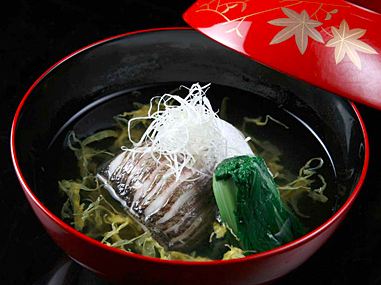Kinmata
4.7/534 Reviews
GionOMR65

Currently closed|Open at 12:00 today
+81-7-52211039
What travelers say:

Kaiseki cuisine was originally a meal served by the host to the guests during the Japanese tea ceremony. However, it is now not limited to the tea ceremony and has become a common high-end cuisine in Japan. "Kaiseki" means to be like a saint wearing a coarse cloth but holding a jade in his heart. Its form is "one soup and three dishes" (or one soup and two dishes).
More
Reviews of Kinmata
Some reviews may have been translated by Google Translate
4.7/5Outstanding
All (34)
Latest
Photo reviews (8)
Positive reviews (18)
Kaiseki cuisine was originally a meal served by the host to the guests during the Japanese tea ceremony. However, it is now not limited to the tea ceremony and has become a common high-end cuisine in Japan. "Kaiseki" means to be like a saint wearing a coarse cloth but holding a jade in his heart. Its form is "one soup and three dishes" (or one soup and two dishes).
Not bad, I chose the cheapest set meal, which is similar to Korean food and snacks. The fried chicken is crispy and fragrant, paired with thick yogurt, the taste is very rich. The hot pot is also large, and two people did not finish it.
The owner took the time to welcome us into his home and came to greet us at dinner which was a nice personal touch. Highly recommend experiencing the kaiseki dining experience here! Next time we will book a room at this beautiful ryokan to fully experience it!
This store is not as gorgeously decorated as many stores. It is hidden in a townhouse. They also have their own takeaways such as sauces, pickles, and kelp, and have opened kaiseki cuisine classes, which shows that the restaurant's historical skills are extraordinary. We booked a table and chair for a Japanese-style private room one day in advance, which costs 16,000 yen per person. The Japanese-style private room also costs 15% service charge and 8% consumption tax, which comes to 19,872 yen per person. The handsome guy asked us if we had any taboos and recorded our hotel name and room number. He also told us that if we canceled the reservation, we would be charged a certain fee because we would purchase ingredients according to the reservation. The strong Kyoto common people's temperament in the store gives people a sense of home, which is very casual, warm and comfortable. The soft lights in the corridor and the floor polished like new. In the middle of the house is a garden created by the family, which is small and exquisite and very Kyoto-style. The waiter led us to a private room on the second floor. The private room is quite spacious for four people, and there is also an inner balcony where you can see the small garden downstairs. The room is elegantly decorated with Zen, calligraphy and painting highlight the artistic temperament, and the antique furniture and chairs give people a nostalgic atmosphere. The lady in traditional kimono first served us tea and asked if we wanted drinks. We didn't drink, so we said we would rather drink tea. So we made black tea for us and sent hot towels to clean our faces and hands. When the dishes started to be served, the waiter would explain the name, composition, and eating method of each dish in fluent English. Of course, we were confused and could only guess what we were eating from individual words. In general, Kaiseki cuisine pays great attention to the elegance of the dining environment, the artistic appreciation of food plating, the exquisite use of utensils, the freshness of ingredients, and the integration of Chinese medicinal materials into seasoning, combining food with art to push the deliciousness to the extreme. After the meal, the boss came up in person to greet us and thank us for our visit, and printed a beautiful menu, and even gave us a tablecloth with the name of the restaurant as a souvenir. After we paid the bill, the boss and the handsome chef escorted us to the door, bowed to thank us and watched us leave. Later, when we passed by the door, the boss greeted us warmly. They only accept international credit cards such as VISA, MasterCard, JCB, etc., but not UnionPay.
This is a well-preserved family-run Japanese-style hotel with a history of 200 years. It specializes in kaiseki dinners. The boss can communicate fluently in English and has no problem. The store often uses local ingredients, which are fully reflected in the flavor of each ingredient. It is fresh and sweet with a springy texture. The service is also top-notch. The food is made with care, and the portions may seem small but In fact, it's quite adequate, making it an unforgettable and satisfying dining experience.
On the way back to the hotel, we went to a restaurant that we had prepared when we were making our travel guide. It was near the Nishiki Market and very close to the hotel. We were lucky enough to have booked a seat for tomorrow night. The handsome guy who received us spoke fluent English and helped us book a table and chairs in a Japanese-style private room, which cost 16,000 yen per person.
Recently, I came across another old Japanese restaurant in Kyoto. According to the owner, this restaurant has a history of nearly 200 years. The taste has been passed down from generation to generation. The result did not disappoint me. It can be seen that the owner really puts a lot of effort into cooking each dish.